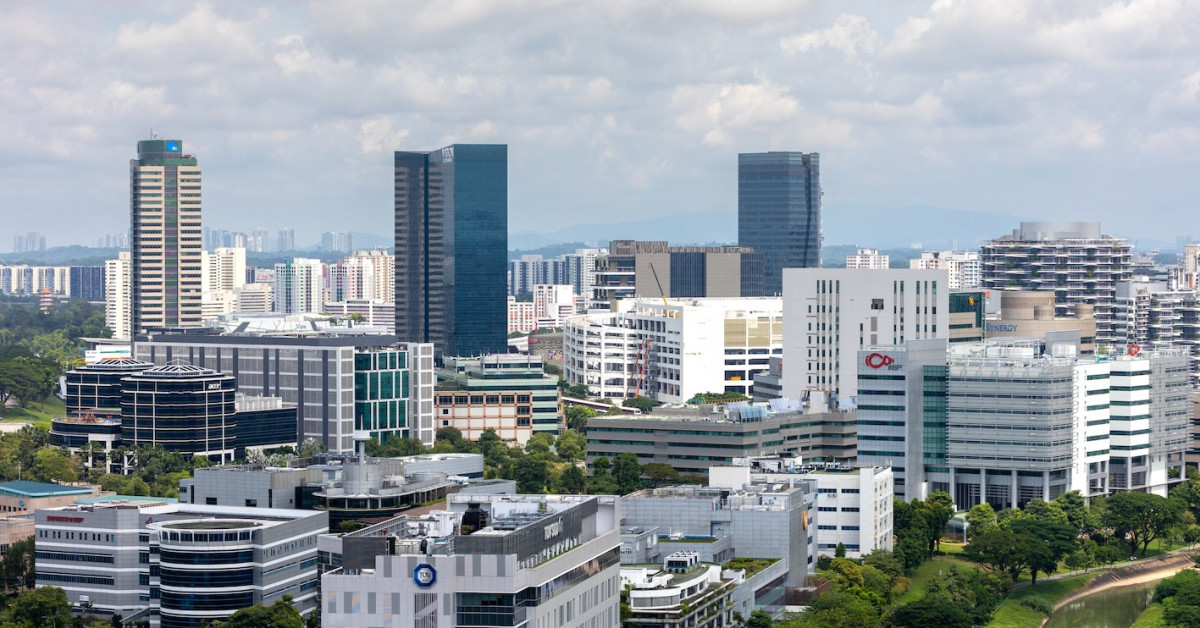According to JTC's quarterly market report, the industrial sector saw rents increase by 1% q-o-q in 2Q2024, slowing down from the 1.7% q-o-q growth in the previous quarter. It marks the slowest rate of quarterly rental growth since 1Q2022, following the post-COVID recovery. On a yearly basis, rents grew by 6.6% in 2Q2024 compared to the 7.8% growth during the same period last year.
Chua Yang Liang, JLL head of research and consultancy for Southeast Asia, attributes the slow quarterly rental growth to the weaker demand for business park space. Rents for business park spaces dipped marginally by 0.1% in 2Q2024, a slowdown from the 2.1% growth in 1Q2024.
JTC data shows the business park vacancy rate declining slightly to 21.7% in 2Q2024 from 22% the previous quarter. Tricia Song, CBRE head of research for Southeast Asia, highlights the "patchy" performance of business parks, with the one-north average vacancy rate at 9% in 2Q2024, about 30% at Changi Business Park in the east, and close to 40% at
International Business Park in Jurong in the west.
Read also: Industrial rents, prices rose for 13th straight quarter in 4Q2023
Advertisement
Advertisement
Increased pressure on business park rents
Business park rents are expected to face increased pressure in the latter half of the year, as non-renewals on lease expiry in specific buildings will lead to a spike in vacancy.
A higher volume of completions in 2H2024 to 2025 will also contribute to a more competitive leasing environment. "The prevailing economic challenges, high-cost environment, and continued work-from-home measures will continue to dilute occupiers' space requirements," says CBRE's Song.
Leonard Tay, head of research at Knight Frank Singapore, reckons business park rents have been dragged down by older business parks in the east and west of Singapore, which have come under pressure. In contrast, he observes that business parks that have immediate connectivity to MRT stations and are centrally located typically enjoy higher occupancies and command higher rents.
Occupiers increasingly cost-sensitive
Rents in the warehouse segment increased by 0.5% as momentum tapered from last quarter's 2% growth. Amid steady demand and the absence of major warehouse completions during the quarter, the occupancy rate increased by 0.2 ppt to 91.3%. Although the warehouse segment continues to see resilient occupancy rates, logistics occupiers are increasingly cost-sensitive and resistant to higher rents, says CBRE.
"The cost pressures can be partly attributed to the Red Sea crisis," says CBRE's Song. With vessels taking a detour to avoid Houthi attacks, freight rates have escalated, along with port congestions in Singapore, adding to supply chain challenges for logistics operators. "Still, landlords remain keen on redevelopment opportunities that seek to convert traditional warehouse developments into prime logistics facilities," she adds.
Overall industrial rents rose due to the continued strong demand for multiple-user factories, which grew by 1.5% q-o-q, accelerating from the previous quarter's growth of 1.3%. This resulted in a tight vacancy of 8.7% for the segment, the lowest since 1Q2012, according to JLL's Chua.
Read also: Kajima launches The Gear, its new regional HQ in Changi Business Park
Advertisement
Advertisement
Prices of industrial spaces also went up by 1.2% q-o-q in 2Q2024, reversing the 0.2% decline in 1Q2024. The price gain was led by the multi-user factory segment, which gained 1.7%. It is the strongest quarterly growth since 1Q2023, says Lee Sze Teck, senior director of data analytics at Huttons Asia. He attributes the growth in the JTC price index to investors looking for better yields.
Increased leasing demand
Demand for industrial space was up 2.78 million sq ft in 2Q2024. This was supported by the recovery in the manufacturing sector, which expanded by 0.5% y-o-y in 2Q2024, reversing the negative annual growth the previous quarter, based on advanced estimates from the Ministry of Trade and Industry. Demand exceeded the quarter's supply, resulting in a rise in occupancy rates across the board to 89% in 2Q2024, up 0.3% q-o-q, says JTC.
CBRE's Song says leasing demand was driven by technology and manufacturing companies, which continue to seek high-spec facilities for their production capabilities.
The higher demand is also reflected in the sharp jump of industrial property transactions by 42.1% q-o-q to 516 in 2Q2024, particularly of multi-user factory and warehouse spaces. The largest strata sale of a multi-user factory in 2Q2024 was a 13,423 sq ft freehold unit in
Amtech Building on Sin Ming Road for $12.5 million ($931 psf).
As of end June, about 8.61 million sq ft of new industrial space is expected to be completed in 2H2024. This is lower than the average annual supply of 9.69 million sq ft in the last three years. Another 18.3 million sq ft of industrial space is expected to come onstream in 2025. In view of the new supply in the pipeline, JTC expects occupancy rates to remain stable for the rest of the year.
Stable market for rest of 2024?
The latest Singstat survey (2024) showed that manufacturing businesses and firms in Singapore were less confident of prospects in the immediate term. "Given the economic weaknesses in Europe and China, businesses are naturally less sanguine," says JLL's Chua.
Read also: CapitaLand Development and Mitsubishi Estate to jointly develop business park in Suzhou, China
Advertisement
Advertisement
However, Chua reckons that the fragmented global trade caused by the US-China trade war should continue to benefit Asia. "It could bring further upside to industrial activity in Southeast Asia, including Singapore, as more firms position themselves to take advantage of trade regionalism here."
Chua says an upside in manufacturing/trade activity in Singapore in 2H2024 could support the demand for industrial space despite the expected large supply completion. Rents are likely to remain stable going forward, he adds.
